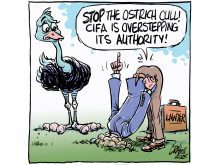Trans-Canada trail
Gradually the pieces of the Trans-Canada (walking, cycling, horseback riding, cross-country skiing, snowmobiling) Trail are being fitted into the map and in a few years, if I had a horse and was inclined to ride it, I could ride my horse from St. John’s, Nfld., to Tuktoyaktuk.
Then, if the horse felt so inclined, we could do a side trip from Calgary along the Kettle Valley to Victoria.
The problem with a horse is that it likes to eat and some places along the tundra it might be necessary to supplement the forage.To carry along the requisite quantity of oats would add to the burden. Unless the horse was a monumental Clydesdale or Belgian, carrying a medium-sized human and a humungous bag of oats would be out of the question. Riding a draft horse creates some discomfort in that your feet are forced to point outward at an angle resembling the splits.
Read Also

Budget seen as fairly solid, but worrying cracks appear
The reaction from the agriculture industry to prime minister Mark Carney’s first budget handed down November 4th has been largely positive.
One would need a bucket of pine tar to prevent abrasions.
I think I’ll leave the horse in the stable and walk the trail instead. St. John’s to Tuktoyaktuk seems a bit ambitious. In fact, Calgary to Kettle Valley seems a bit onerous as well.
Perhaps I’ll settle for walking all the way from Saskatchewan to Alberta in the Cypress Hills Interprovincial Park.
That way the jaunt can be anywhere from a few kilometres to a few centimetres.
In any event the idea of the Trans-Canada Trail is an excellent one and our family is happily joining with the rest of you in financing it. So far we’ve paid for eight metres.
Now that seems about the right distance for a hike or even a horseback ride.














